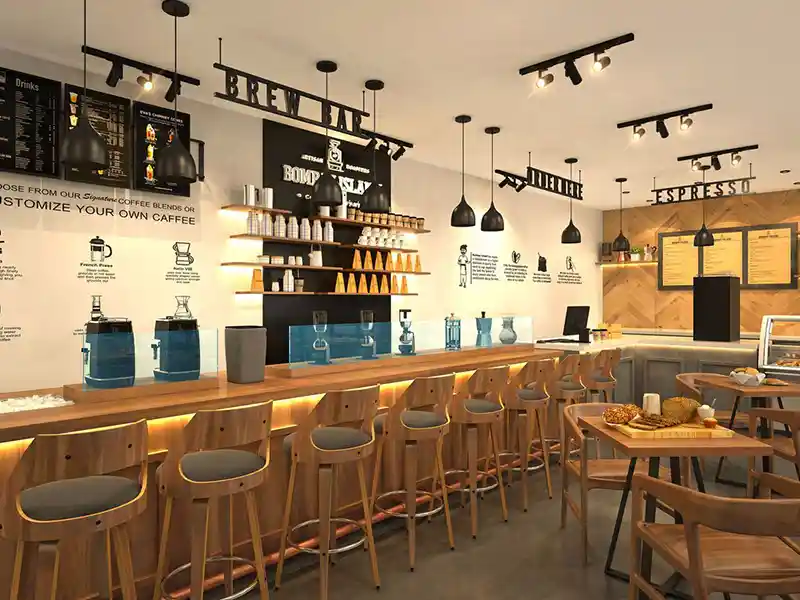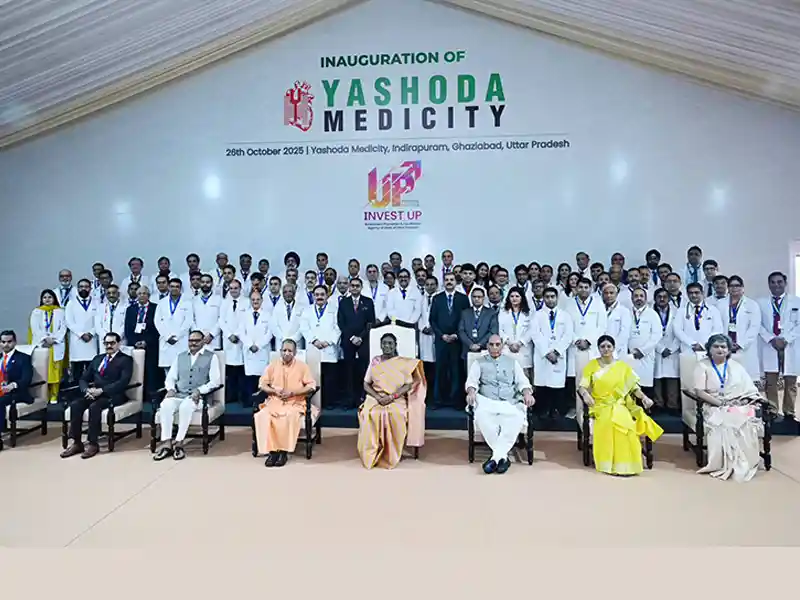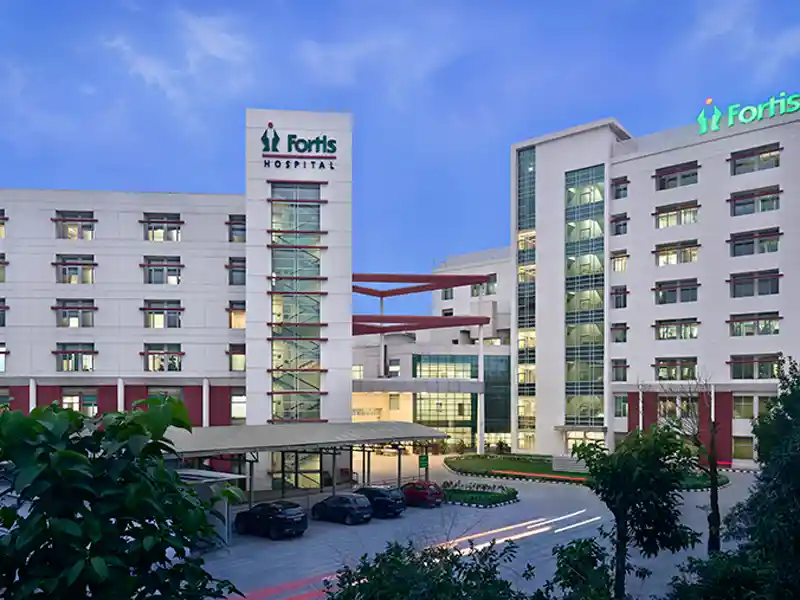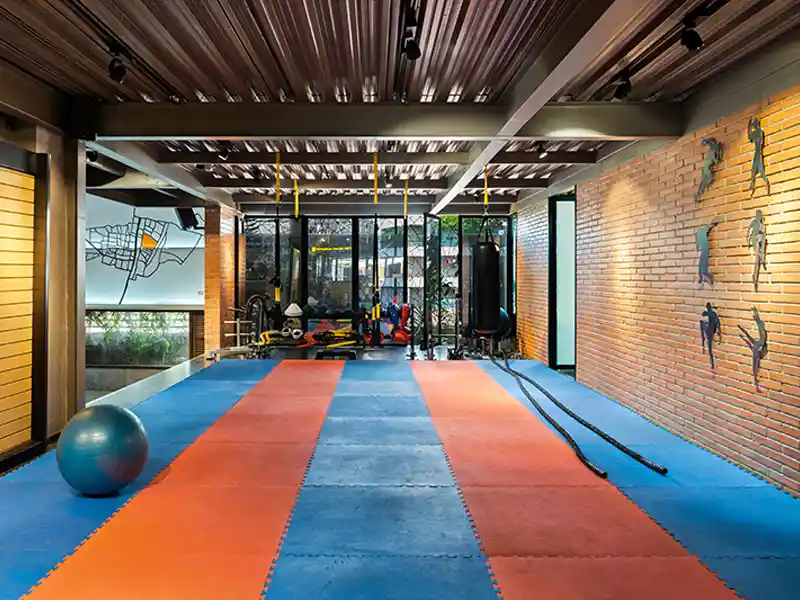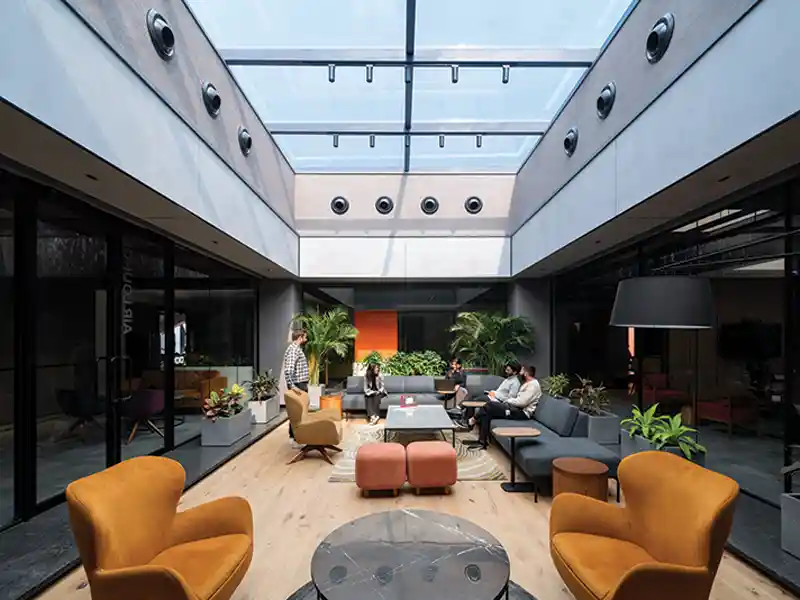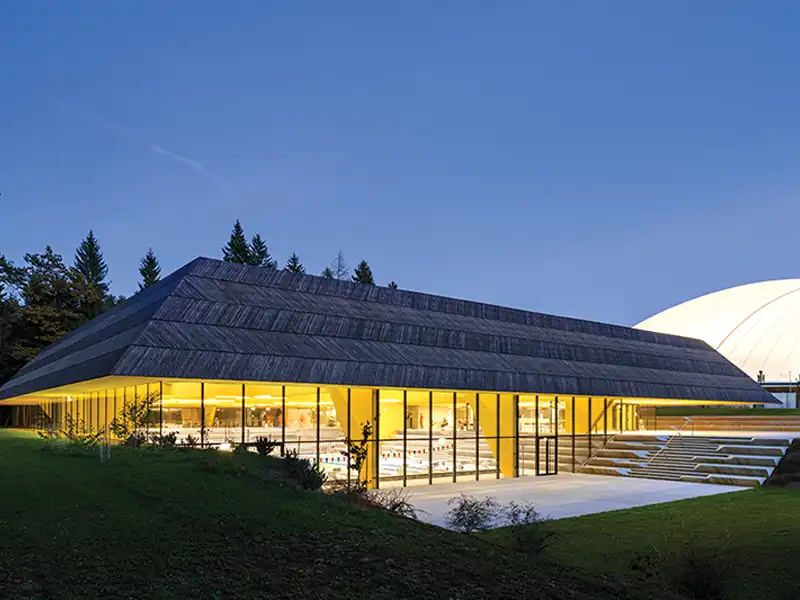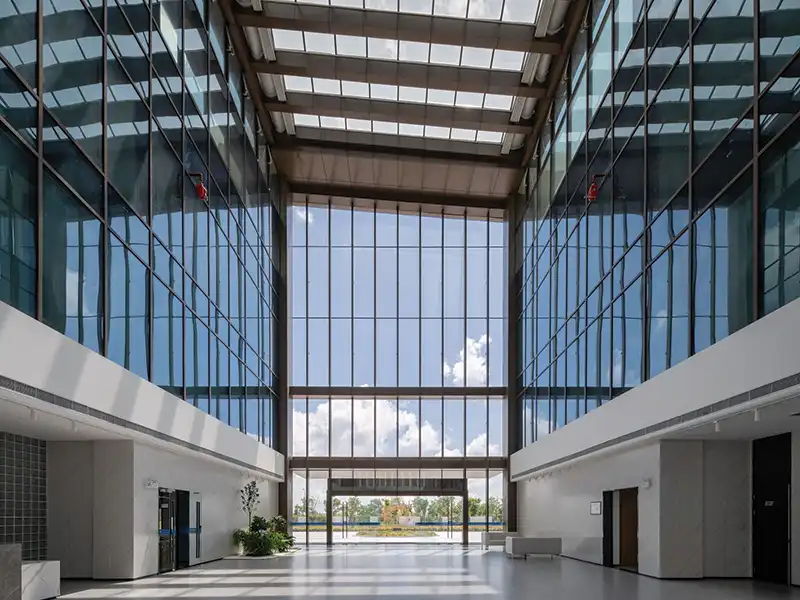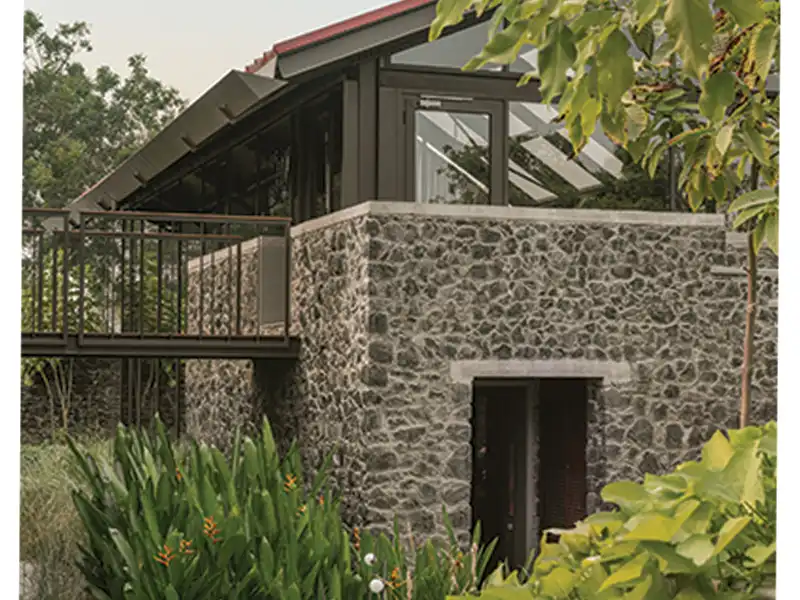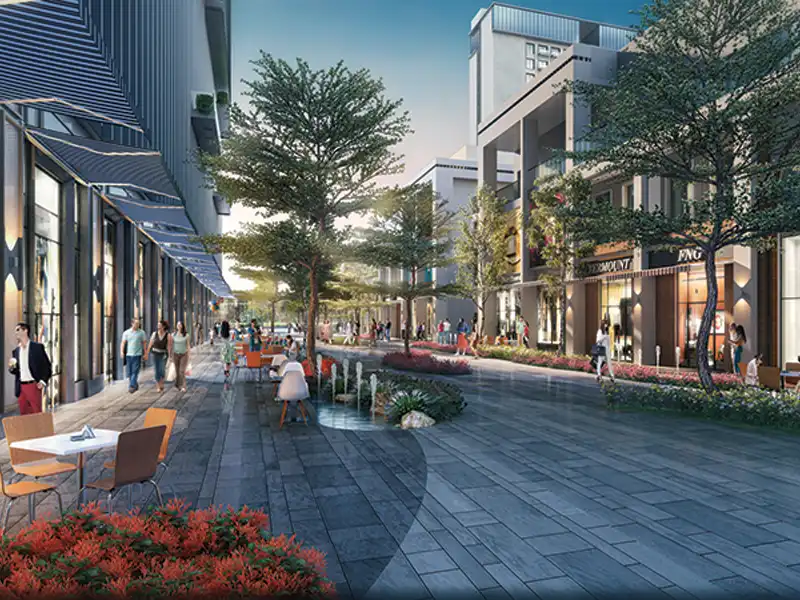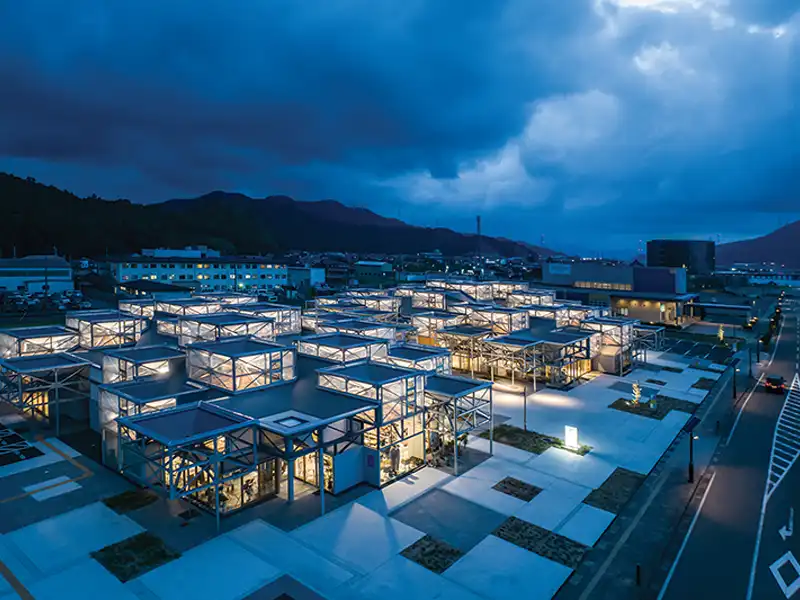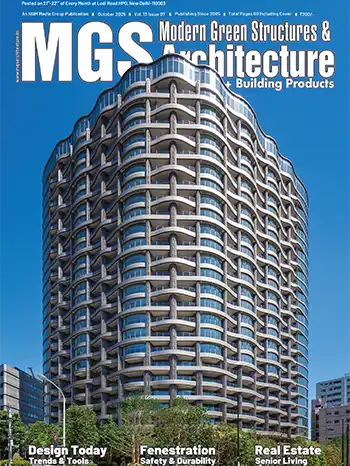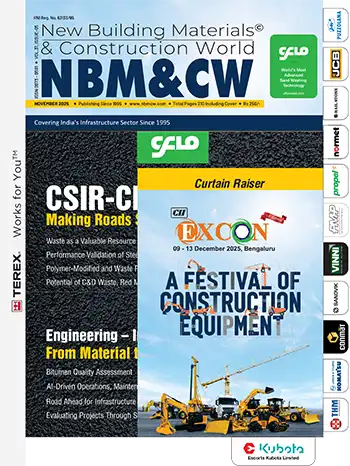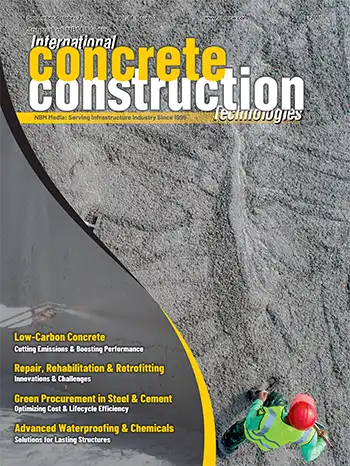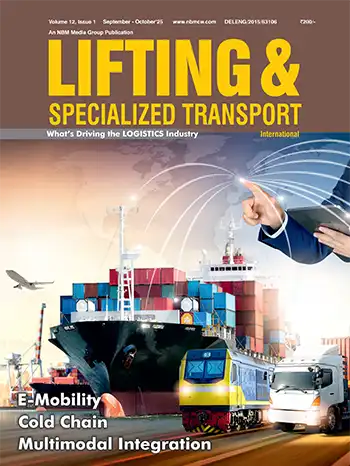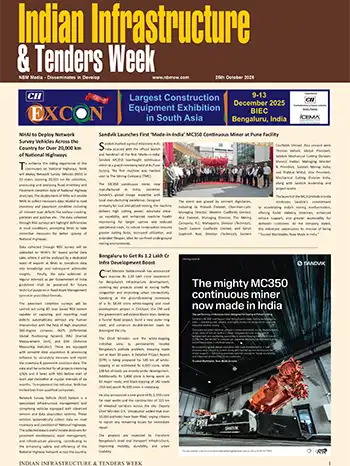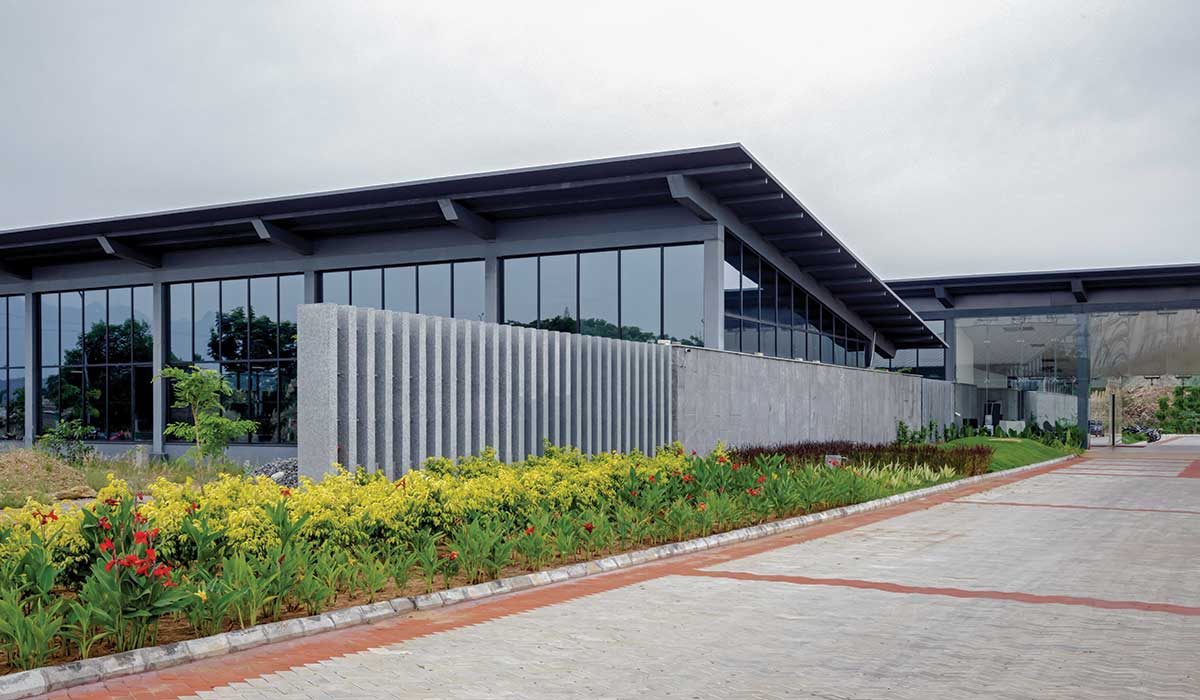
Fact File
Typology: Commercial, SEZ Business ParkClient: VEE Technologies
Location: Salem, Tamil Nadu
Site Area: 4,11,170 sq. ft/38, 198 sq.m
Built-Up Area: 28,000 sq.ft/2600 sq.m
Principal Designer: Rahul Kadri
Design Team: Nithin Hosabettu, Deepika Ajmera, Veda Kesarkar
Photographer: Running Studios
Products & Vendors
ACP, Glass, Concrete: Saint-GobainSanitaryware & Fittings: Hindware
Flooring: Quotone
Furniture: Talin
Air Conditioning: Bluestar
Lighting: Wipro
Paint: Asian
Consultants
Structural: AVS ConsultechMEP: ESVE Design Solutions
HVAC: Airtron
Landscape: Shastri Associates
PMC: Sona Polytechnic
Façade: 4FTB
Contractors
Facade Engineering: 4C Corporate ServicesCivil & Engineering: Baskaran & Co
PEB Steel Structure: Armour Steel Buildings
To create a workplace that is positive and connected to nature, we imagined the project as an ‘office within a garden’ with the brief to create an employee-centric workplace. Since we spend a third of our day at work inside a building, this built environment has a direct impact on our well-being.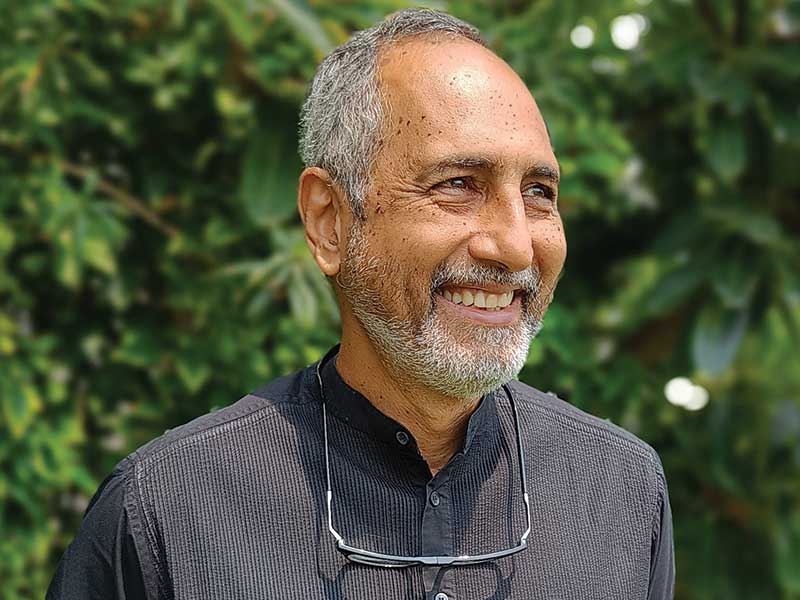
Rahul Kadri, Principal Designer
The new workplace for VEE Technologies, an IT service management company based in Salem, Tamil Nadu, creates a positive, invigorating environment for 450 people to work, collaborate, and engage with the outdoors. Interspersed with landscaped sit-outs, the design of the office invites people to step away from their screens and into nature, all within the building premises.
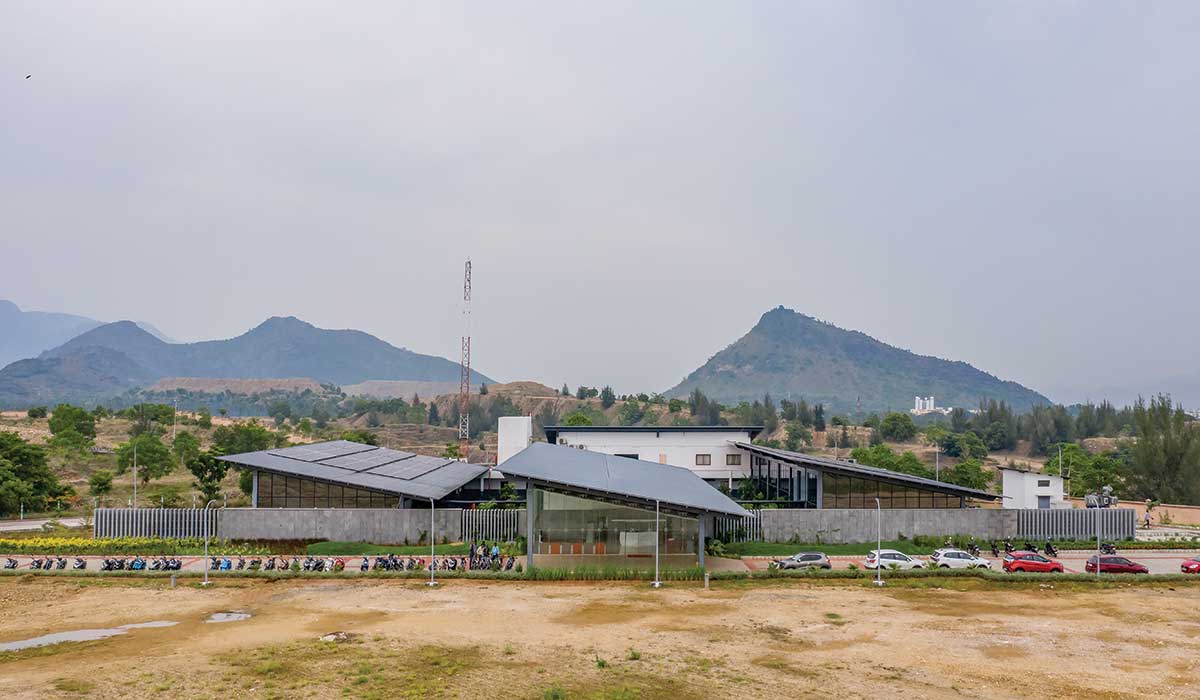
As the first building in the 9-acre-high-tech commercial business park, this 30,000 sq. ft-office is constructed using recyclable and reusable materials like steel and a flexible structural grid. The design offers a cost- and time-effective solution for remodelling the building to fit a different function once the business park is fully operational.
Driven by the need to create a high-security environment at VEE Technologies, three work studios, and a cafeteria are arranged as independent functions with 2-metre-wide passages connecting them. The central studio accommodates 54 workstations, a training area, and a conference room, while the other two studios accommodate 160 and 180 workstations each.
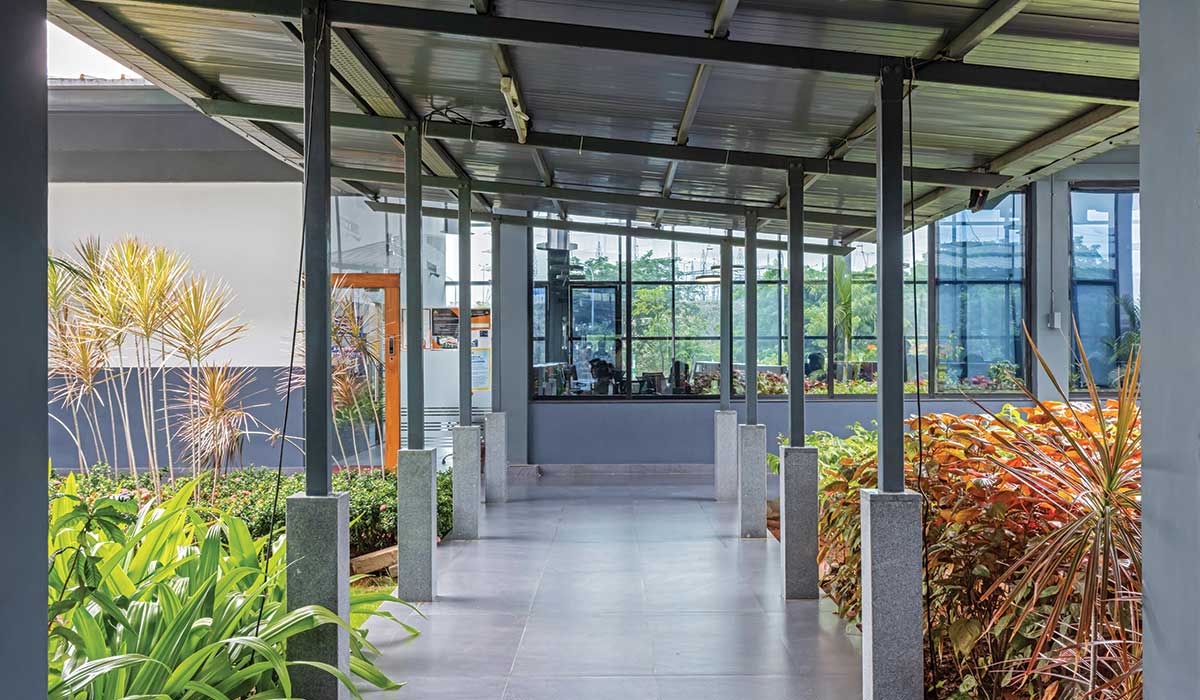
Each studio is designed to create an open layout with glare-free, floor-to-ceiling windows, steering away from the typical dull office setup with cubicles. Courtyards and gardens along the lengths of both studios create a sense of being surrounded by nature. With outdoor benches, grass mounds and a mix of native flora and shade trees, these courtyards serve as outdoor break rooms.
Located in a region where temperatures rise to as high as 45 degrees in the summers, the building is oriented in the north-south direction to minimise heat gain without compromising on daylight. The taller windows oriented towards the north bring ample natural light into the studio, while the east and west walls of the studios have fewer openings – creating an energy-efficient glazing system, further minimising heat gain during the day.
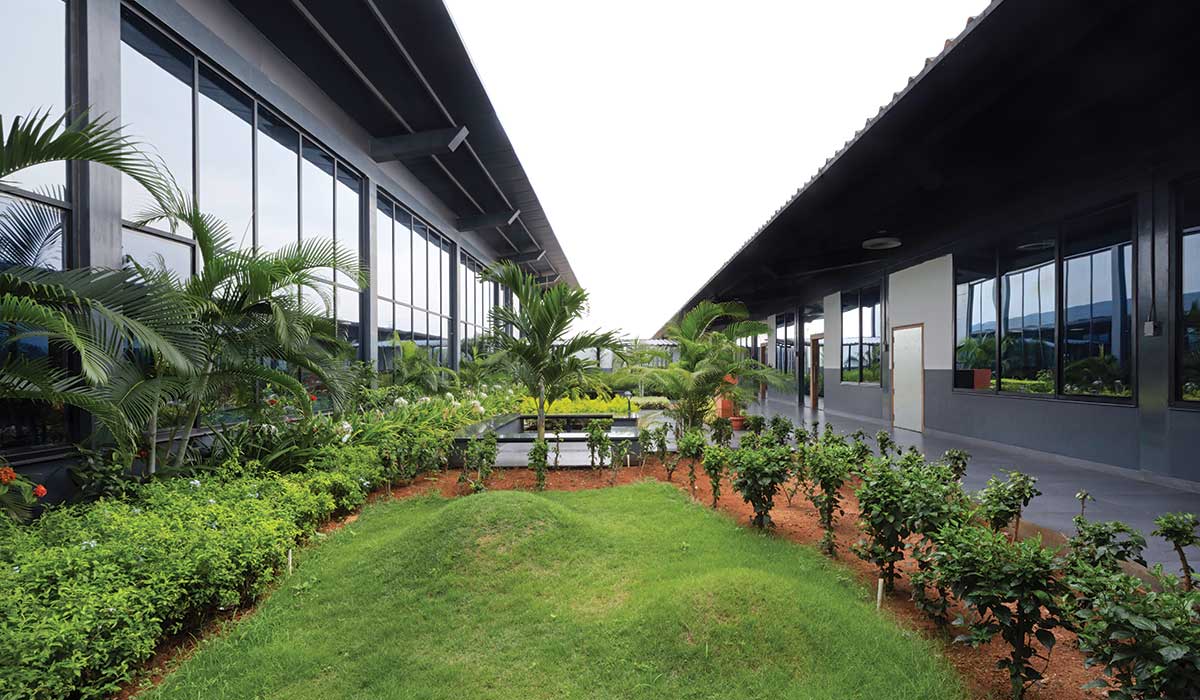
For an office that runs round the clock, it was important to incorporate design strategies that are energy- and cost-efficient. The building is completely powered by rooftop solar panels. Integrating technology and design, smart air conditioning systems that respond to the outdoor temperature help reduce energy. The custom-designed lights adjust automatically depending on the ambient lighting conditions, further saving energy. The custom-made zig-zag partitions on desks create a comfortable, glare-free viewing angle for two screens, optimising not only people’s productivity and privacy but also spatial utilisation.

